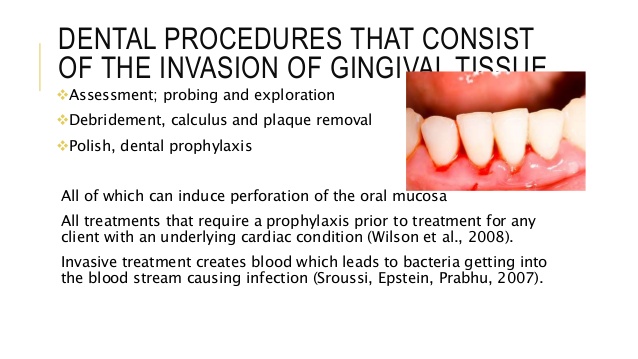New Guidelines for Antibiotics before dental procedures
New Guidelines for Antibiotics before dental procedures

For many years the American Heart Association has recommended that people who have certain types of heart conditions should take antibiotics before dental procedures.
The purpose of this was to ensure that the patient would avoid infective endocarditis, an infection of the heart.
previously known as bacterial endocarditis.
The AHA’s latest guidelines were published in its scientific journal, Circulation, in April 2007. The new guidelines indicate that most of the patients who needed to take antibiotics in the past no longer are required to take them.
The guidelines are based on recent studies that indicate the risks of taking preventive antibiotics outweigh the benefits for most patients. The risks from these antibiotics range from mild to severe adverse reactions to in rare cases, death. Inappropriate use of antibiotics can also lead to the development of drug-resistant bacteria.
Researchers have found that there is no evidence that taking the antibiotics prior to a dental procedure will prevent infective endocarditis in patients at risk of developing a heart infection. These bacteria in the mouth are already able to enter their bloodstreams from brushing and flossing..
The guidelines say patients who have taken prophylactic antibiotics routinely in the past but no longer need them include people with:
• mitral valve prolapse
• rheumatic heart disease
• bicuspid valve disease
• calcified aortic stenosis
• congenital heart conditions such as ventricular septal
the defect, atrial septal defect, and hypertrophic cardiomyopathy.
The new guidelines are aimed at patients who would have the greatest danger of a bad outcome if they developed a heart infection.
Preventive antibiotics prior to a dental procedure are advised for patients with:
1. artificial heart valves
2. a history of infective endocarditis
3. certain specific, serious congenital (present from birth) heart conditions, including
• unrepaired or incompletely repaired cyanotic congenital heart disease, including those with palliative shunts and conduits
• a completely repaired congenital heart defect with prosthetic material or device, whether placed by surgery or by catheter
intervention, during the first six months after the procedure
• any repaired congenital heart defect with residual defect at the site or adjacent to the site of a prosthetic patch or a prosthetic device
4. a cardiac transplant that develops a problem in a heart valve.
The new recommendations apply to many dental procedures, including teeth cleaning and extractions. Patients with congenital heart disease can have complicated circumstances.
They should check with their cardiologist if there is any question at all as to the category that best fits their needs.(Source: ADA News)




Leave a Reply